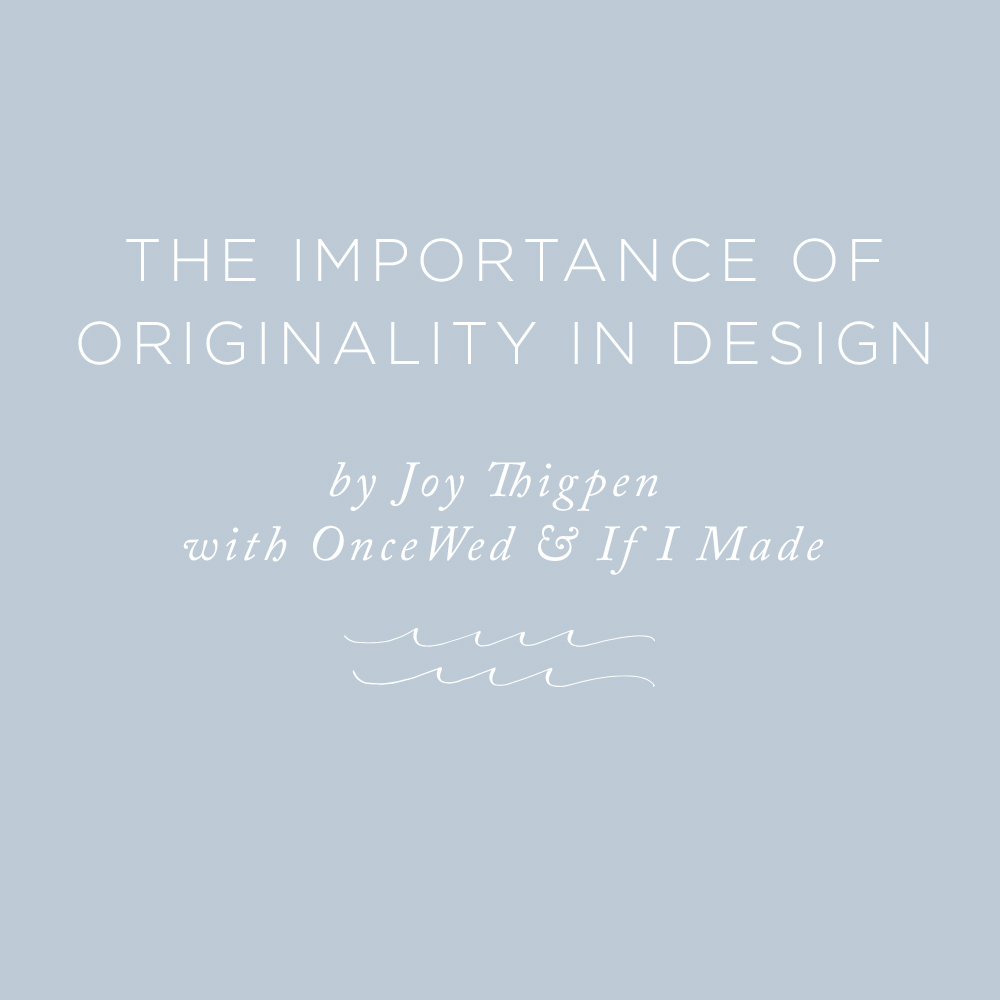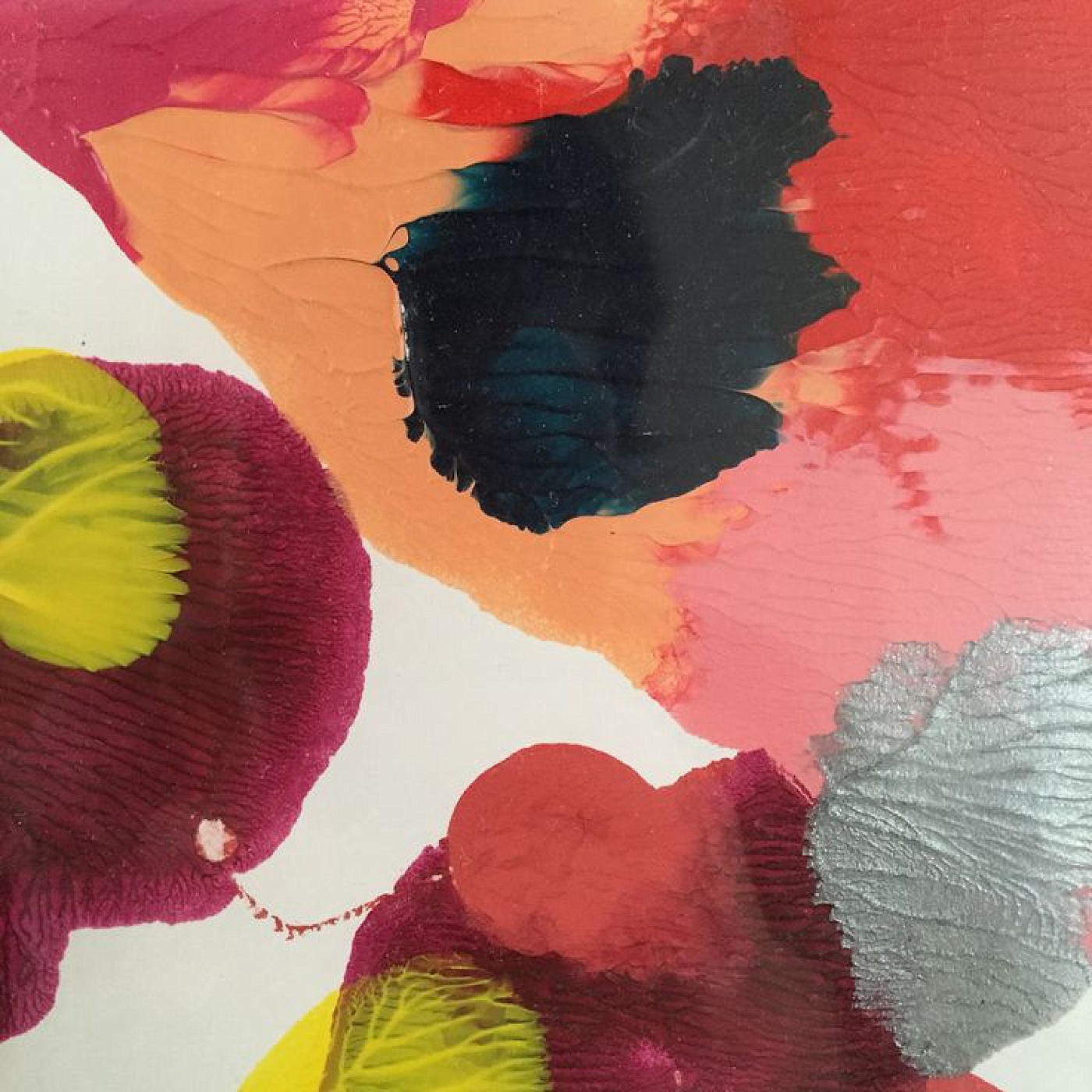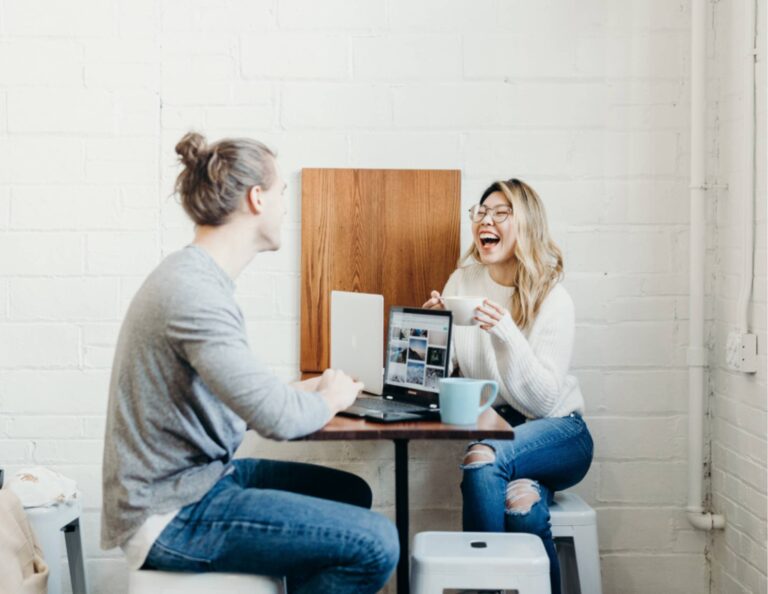
by @joythigpen
in collaboration with @oncewed & If I Made
When you look at an image that inspires you, what do you see?
When our only observations of what we see are: “I like it” or “I don’t like it” or “That’s pretty,” we are like children babbling while we smear and scribble colors on paper. The image below is from a section of a painting my kids and I made together. It is one of my favorite things on my wall and smearing paint with them is one of my favorite little pastimes. And while it’s fun, it is when we begin to notice, understand, and work with the unseen that we become artists, creating and communicating in a language with intentionality and meaning.

Not always, but often, what makes a project a success, be it a wedding design, a photo shoot, or a personal project, is the degree of intentionality brought to it. Does the designer, stylist, photographer, sculpter display an understanding of the meanings behind the visuals?
One of the main critiques I have with beginners’ work, or from those who haven’t refined their aesthetic skills, is that there is often a lack of attention to the unseen. This tends to lead to images and work that feel confused, empty, or illogical. Those who master the language of aesthetics are those who have learned to make visual poetry or full-sensory experiences that exact the mood, feeling, and ideology they were aiming for by employing each note of reference with intentionality.
As humans, and especially as creatives, we want in every way to show who we are and what matters to us. It matters to us which chairs we use and how our hair is done (or not done) and what fonts we use because of what each element is saying.
Do these tables contribute to a mood of rusticity or modernity?
Do these shoes generate a feeling of commerce or domesticity?
Does this website design connect us to the past or stand as a symbol of the future?
Does this painting communicate excitement or harmony?
Every visual artifact is like a sponge holding information from all the history and cultures that came before it. We never create in a vacuum. The lines, shapes, materials, and colors you choose for a project all sing their own song and come with a set of embedded meanings.
It’s less about things being “right” or “wrong” and more a question of whether an object, color, or shape is right for a particular context, particularly when we’re talking about creating for others.
Desirable, offensive. I like it, I don’t like it. It’s good, it’s bad. These are just the first words of a much deeper conversation.
When people only stay on the surface of beautiful images, they usually end up trying to recreate those images or work they already like. However, if you can dig down into why it’s beautiful to you, you can find the real source of your inspiration. Then, if you can learn the visual language of those words, you will be able to create new work that still holds and speaks of all those things that are beautiful to you and you wind up with beautiful original images.
Your creative work becomes more valuable when you are able to produce things that are more original. In our current age of mass production, group think, and homogenized globalization, a lot of people can copy but oddly enough (since we really are all unique), not many people can produce work with a unique voice.
The good news is, the more we dive into and understand our own aesthetic and are able to communicate in our own voice, the more valuable our work becomes.



